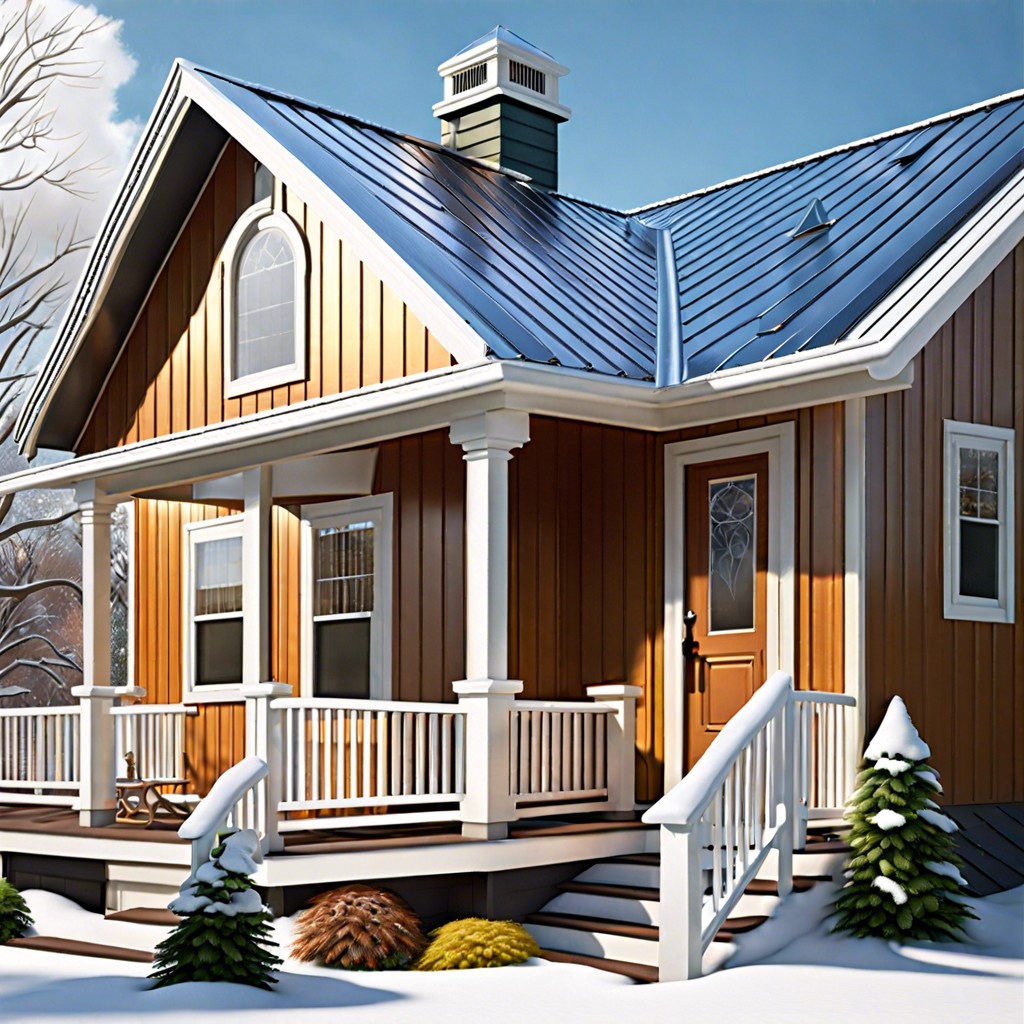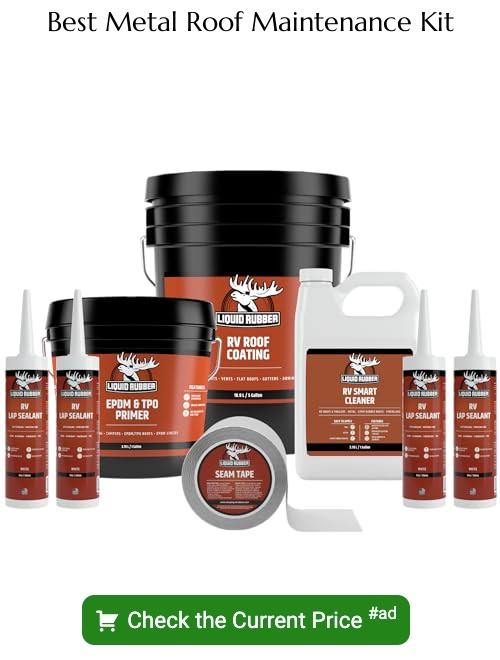Last updated on
Discover how long metal roofs typically last and what factors influence their durability.
Key takeaways:
- Metal roof lifespan is affected by material quality and installation.
- Different metals have varying lifespans: aluminum (35-50 years), steel (40-70 years), copper (70+ years), zinc (70+ years).
- Environmental factors such as weather and maintenance impact metal roof durability.
- Proper maintenance, including inspections and cleaning, is crucial for maximizing metal roof lifespan.
- Metal roofs typically last longer than asphalt shingles and offer better resistance to severe weather.
Factors Influencing the Lifespan of a Metal Roof

Several elements substantially impact the longevity of metal roofs. First and foremost, the quality of material plays a pivotal role. Higher-grade metals resist corrosion and wear better, directly prolonging roof life. Installation quality also cannot be underestimated; poor workmanship can lead to issues like leaks or loose panels, which significantly shorten a roof’s lifespan.
Additionally, environmental conditions are crucial. In areas with harsh weather, such as heavy snow, frequent hail, or extreme temperatures, metal roofs may face more rapid degradation unless specifically designed for such conditions. Lastly, ongoing maintenance is essential to maximize longevity. Regular inspections and small repairs can prevent minor issues from developing into major problems, ensuring the roof remains in top shape for decades.
Types of Metal Roof Materials and Their Lifespan
Different metal roofing materials boast varying degrees of durability and thus, different lifespans:
– **Aluminum Roofing**: Lightweight and resistant to corrosion, aluminum is a popular choice in coastal areas. An aluminum roof typically lasts about 35 to 50 years.
– **Steel Roofing**: Available in three varieties—galvanized, galvalume, and weathering steel (Corten)—steel roofs are coated to prevent rust and can last from 40 to 70 years depending on the type and coating.
– **Copper Roofing**: Known for its longevity, copper often surpasses 70 years and might even reach 100 with minimal maintenance. It weathers naturally to a green patina over time.
– **Zinc Roofing**: Like copper, zinc also weathers well and can last over 70 years. It resists corrosion effectively and is highly durable.
Each material offers unique benefits and choices depend on both budget and environmental conditions. Regular inspections and upkeep are crucial to achieving these maximum lifespan estimates.
Common Factors Affecting Durability
Exposure to the elements plays a significant role in the wear and tear of metal roofs. In regions with frequent hailstorms or heavy snowfall, metal roofs may face accelerated degradation. Similarly, coastal areas subject roofs to salt spray, which can corrode metal over time.
Installation quality cannot be overlooked. A roof that’s improperly installed may have issues like misaligned panels or inadequate sealing, leading to leaks and structural damage. Ensuring that your roof is installed by experienced professionals is crucial for maximizing its lifespan.
Environmental factors are also key. If your metal roof is surrounded by tall trees, it could be more susceptible to falling branches and debris that scratch or dent the surface. Moreover, areas that experience large temperature swings can cause metal to expand and contract, stressing the material.
Routine maintenance such as cleaning gutters, removing debris, and checking for scratches or dents should be part of your annual home care schedule. Catching small issues early can prevent them from becoming costly repairs down the line.
By recognizing these factors and addressing them proactively, the longevity of a metal roof can be greatly enhanced.
Maintenance Recommendations
Regular maintenance is key to maximizing a metal roof’s longevity. Here are some effective tips:
Inspect your roof annually. Look for any signs of damage, such as dents, scratches, or loose panels, which can occur after severe weather events. Addressing these early prevents bigger issues.
Keep it clean. Debris like leaves, branches, and dirt can accumulate on your roof. Periodic cleaning helps prevent corrosion and maintains the aesthetic appeal of your metal roof.
Ensure proper ventilation. Adequate airflow prevents moisture buildup, which can lead to rust and weaken the roof structure over time.
Check the sealants. Over the years, sealants around roof fixtures and joints may degrade. Inspecting them annually and reapplying when necessary helps prevent leaks and water damage.
By adhering to these maintenance steps, you ensure optimal performance and prolong the life of your metal roof.
Comparative Lifespan Analysis: Metal Vs. Other Roofing Materials
Metal roofs often outshine their counterparts in terms of durability. Typically, a well-installed metal roof can last anywhere from 40 to 70 years. In contrast, asphalt shingles, the most common roofing material, usually hold up for about 20 to 30 years.
Slate and tile roofs, while offering longevity comparable to metal, often come with increased maintenance and initial cost considerations. For instance, a slate roof can endure for over 100 years but may need frequent inspections to replace broken tiles.
The key advantage of metal roofing lies not only in its longevity but also in its ability to withstand severe weather conditions. Metal roofs are notably fire-resistant and impervious to rot and insect damage, which commonly affect wood shingles.
Choosing between these materials often boils down to budget, aesthetic preference, and climate considerations. But for those prioritizing longevity and low maintenance, metal roofs present a compelling option.





